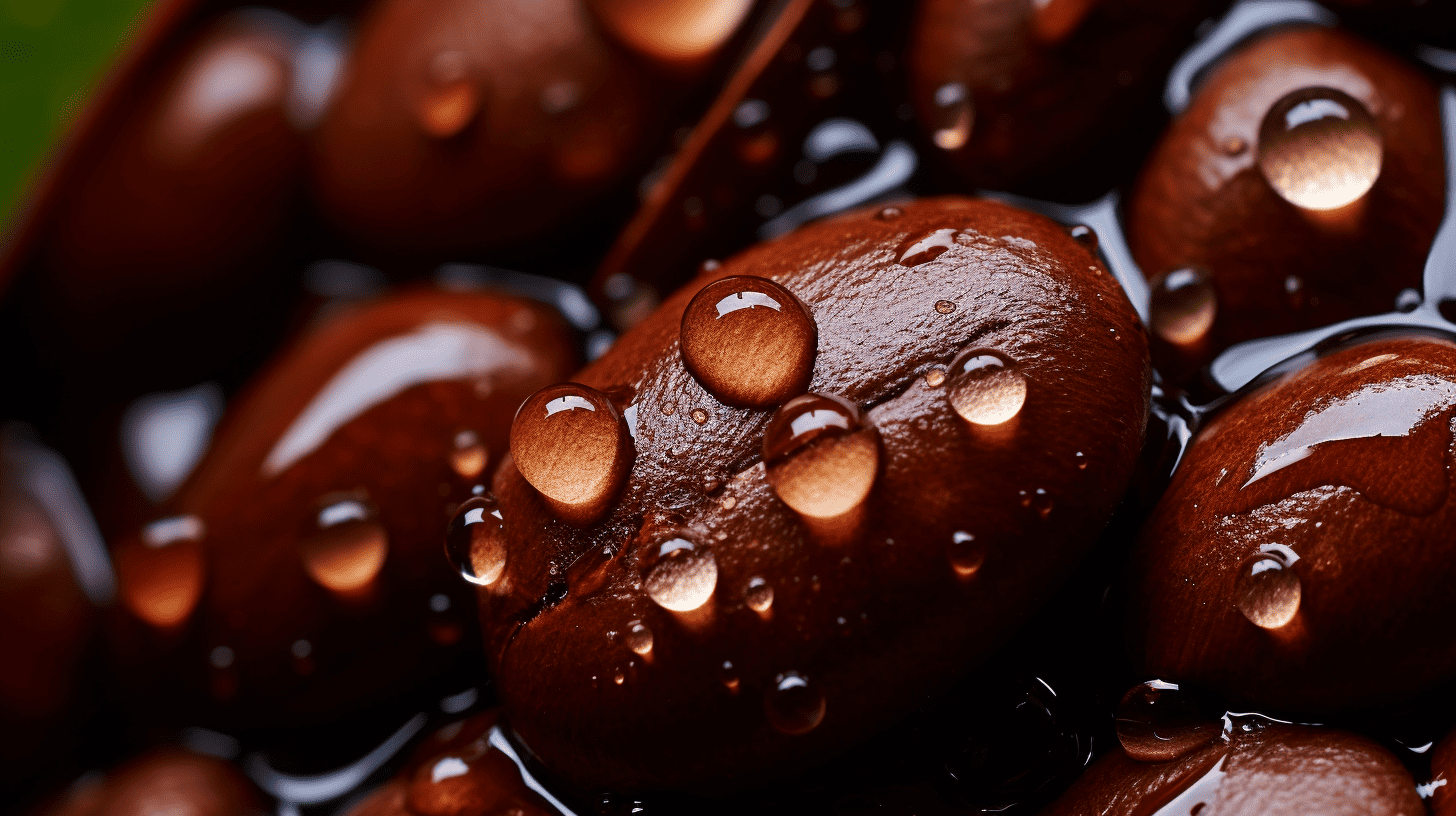Coffee is a popular beverage enjoyed by millions of people around the world. Whether you prefer instant coffee, flavored coffee, cappuccino, latte, espresso, or any other coffee drink, you must be mindful of how much caffeine, milk, and sugar you consume in your morning cuppa. Coffee calories with milk and sugar can significantly increase the calorie count of your drink.
Starbucks and other cafes offer a variety of coffee types with varying levels of caffeine content. Some might prefer a more potent brew for that extra kick in the morning. Others might opt for a milder blend to ease into their day.
Adding Milk and Sugar Into Your Cup
| Type of Milk or Sugar | Calories per Ounce | Carbohydrates per Ounce |
|---|---|---|
| Whole Milk | 18 | 1.5 |
| 2% Milk | 15 | 1.5 |
| 1% Milk | 12 | 1.5 |
| Skim Milk | 9 | 1.5 |
| Half-and-Half | 20 | 0.5 |
| Heavy Cream | 52 | 0.5 |
| Almond Milk | 5 | 0.5 |
| Soy Milk | 10 | 0.4 |
| Rice Milk | 15 | 2.75 |
| Coconut Milk | 12 | 0.5 |
| Granulated Sugar | 16 | 4 |
| Stevia | 0 | 0 |
| Splenda | 0 | 0 |
Milk is often added to coffee drinks for a creamy texture and taste. It can also help balance the bitterness of some coffee beans. However, it’s essential to keep in mind that milk contains calories too! Depending on how much milk you add to your drink, you could consume anywhere from 20-120 calories per serving and additional carbs.
Sugar is another common ingredient added to coffee drinks for sweetness. While it may make your drink more enjoyable, it can also add up quickly in terms of calories. Just one teaspoon of sugar contains about 16 calories! If you like their coffee on the sweeter side, consider using artificial sweeteners or reducing the amount of sugar you use.
It’s worth noting that different types of coffee drinks contain varying amounts of milk and sugar. For example, lattes typically contain more milk than cappuccinos do. Similarly, some flavoured coffees may already contain added sugars.
If you’re trying to watch your calorie intake or maintain a daily diet overall, there are ways to enjoy your daily dose of caffeine without going overboard on milk and sugar. Consider opting for black coffee or adding just a splash of milk instead of a full serving size. You could also try using natural sweeteners like honey or maple syrup instead of sugar.
Understanding Your Coffee Calorie Intake
Coffee is one of the most popular beverages in the world, enjoyed by millions of people every day. While it may seem like a harmless indulgence, coffee can actually be a significant source of calories if you’re not careful. Adding milk and sugar to your coffee can significantly increase the calorie count, making it important to understand your coffee calorie intake.
Calorie Count: The Basics
A standard cup of black coffee contains only 2 calories, which makes it an excellent choice for those who are watching their weight or trying to maintain a healthy diet. However, things quickly change when you start adding milk and sugar. A single tablespoon of sugar contains around 16 calories, while a cup of whole milk adds another 150 calories or more.
Those extra calories can quickly add up if you enjoy multiple cups of coffee throughout the day. For example, if you drink four cups of coffee with two tablespoons of sugar and a splash of whole milk each day, that’s an additional 600 calories per day – or 4,200 extra calories per week!
Mindful Consumption: Tips for Cutting Calories
Fortunately, there are several ways to enjoy your daily dose of caffeine without consuming unnecessary extra calories:
How Many Calories in Black Coffee, Coffee with Semi-skimmed Milk, and Cappuccino?
Black Coffee: The Ultimate Low-Calorie Beverage.
If you are looking for a low-calorie beverage that can give you an energy boost in the morning, black coffee is your best bet. With only 1 calorie per 100ml, black coffee is one of the lowest calorie drinks available. It is also rich in antioxidants and has been linked to numerous health benefits such as reduced risk of type 2 diabetes and liver disease.
However, if you prefer your coffee with milk and sugar, the calorie count increases significantly. So let’s take a closer look at how many calories are in different types of coffee with milk.
Coffee with Semi-Skimmed Milk: A Moderate Calorie Option
Adding semi-skimmed milk to your coffee can increase the calorie count by around 10 calories per 100ml. While this may not seem like much, it can quickly add up if you drink multiple cups of coffee throughout the day. However, choosing skimmed milk instead of semi-skimmed can significantly reduce the calorie count in your cup of joe.
It’s worth noting that some people may find that using skimmed milk affects the taste and texture of their coffee. If this is the case for you, try gradually reducing the amount of semi-skimmed milk until you reach a level that suits your taste buds.
Cappuccino: A High-Calorie Option
Cappuccino is a popular choice among coffee lovers due to its frothy texture and rich flavor. However, it also has an average of 60 calories per 100ml, making it one of the highest calorie options on our list.
The high-calorie count in cappuccino comes from both the milk used to make it and any added sugar. If you want to enjoy a cappuccino without consuming too many calories, consider asking for skimmed or almond milk instead of regular cow’s milk. You could also skip adding sugar or try using a sugar substitute.
Adding Sugar to Coffee: A Calorie Bomb
If you like your coffee sweet, adding sugar can significantly increase the calorie count. Just one teaspoon of sugar adds around 16 calories to your cup of coffee. If you drink multiple cups of coffee throughout the day and add sugar to each one, this can quickly add up and contribute to weight gain.
If you want to reduce your calorie intake but still enjoy a sweet coffee for flavoring, consider using a natural sweetener such as honey or stevia instead of sugar. These options are lower in calories and won’t cause the same blood sugar spikes as regular table sugar.
The Healthiest Milk Options for Your Coffee Calories
Skim Milk: The Lowest Calorie Option. Lets take a look at some of the benefits of low calorie milk:
- Low in Calories: Skim milk has fewer calories than whole milk, making it a good choice for those looking to manage their calorie intake.
- High in Protein: It’s a great source of protein, which is essential for muscle repair and growth.
- Rich in Vitamins and Minerals: Skim milk is high in essential nutrients such as calcium, vitamin D, and vitamin B12, which are beneficial for bone health and metabolism.
- Low in Fat: It contains very little fat, especially saturated fat, which can benefit heart health.
- Lactose Source: Skim milk contains lactose, a natural sugar that can provide a healthy energy source.
- Hydrating: The high water content in skim milk can aid in hydration.
- Suitable for Weight Management: Skim milk is often recommended in weight loss and management plans due to its low calorie and fat content.
Remember, while skim milk has many benefits, individual dietary needs and preferences may vary. It’s always best to consult with a healthcare provider or a dietitian for personalized advice.
For those who are watching their calorie intake, skim milk is the best option for your coffee. Skim milk contains the lowest calories compared to other types of milk. A cup of skim milk has only 83 calories, which is significantly lower than whole milk (149 calories) and fat milk (146 calories).
Not only does skimmed milk have fewer calories, but it also contains less fat. Skimmed milk has less than 0.5% fat content, making it a healthier choice for those who want to maintain a healthy weight or lose some pounds. Skimmed milk is an excellent source of calcium and vitamin D that helps promote strong bones and teeth.
Whole Milk and Fat Milk: A Creamier Taste
If you are looking for a creamier taste in your coffee, whole milk and fat milk are good choices. Although they contain more calories than skimmed milk, they still provide essential nutrients such as calcium and vitamins A and D.
Whole milk has around 3-4% fat content while fat-free or low-fat options usually have 1-2% fat content. While it’s true that whole or full-fat options may not be as healthy as skimmed or low-fat ones, they can still be part of a balanced diet when consumed in moderation.
Soy Milk and Almond Milk: Plant-Based Options
Soy and almond milks are great alternatives for lactose intolerant or vegan. These plant-based options are naturally low in calories with unsweetened versions containing only around 30-40 calories per cup.
Soy milk is made from soybeans while almond milk is made from ground almonds mixed with water. Both types of milks offer different health benefits such as being rich in protein, vitamin E, fiber, magnesium, iron, zinc, potassium among others.
Steamed Milk: A Healthier Option
Steamed milk is a healthier option compared to regular milk as it contains fewer calories and is less likely to cause digestive issues. Steaming the milk reduces its volume, making it less likely to cause bloating or discomfort.
When you steam the milk, you are also adding air into it which creates a frothy texture that makes your coffee look and taste better. Steamed milk can be used in various coffee drinks such as cappuccinos, lattes, and macchiatos.
Black vs. Semi-skimmed: Which One Has More Calories?
Black coffee is popular for people looking to cut calories and maintain a healthy lifestyle. This is because black coffee has zero calories, making it an excellent option for those watching their weight or trying to reduce their calorie intake. On the other hand, semi-skimmed milk adds around 20 calories per serving, making it a less attractive option for those who want to keep their calorie count low.
While black coffee has no cholesterol, semi-skimmed milk contains more cholesterol than black coffee. Cholesterol is fat that can build up in your blood vessels and increase your risk of heart disease. Therefore, choosing black coffee over semi-skimmed milk can help reduce cholesterol intake and promote a healthier heart.
Adding sugar to black coffee increases the calorie count, but still less than semi-skimmed milk. A serving of semi-skimmed milk adds around 1.5 grams of fat, while black coffee has none. Opting for black coffee over semi-skimmed coffee can save up to 100 calories daily for regular coffee drinkers.
If you drink multiple cups of coffee throughout the day, switching from semi-skimmed milk to black could significantly affect your daily caloric intake. For example, if you typically drink four cups of coffee with semi-skimmed milk daily, switching to black could save you up to 80-100 calories per cup or 320-400 calories per day.
In addition to saving on calories and reducing cholesterol intake, other benefits are associated with drinking black coffee. Black coffee contains antioxidants that can help protect against cell damage and reduce inflammation. It’s also been linked to improved brain function and increased metabolism.
Iced Coffee Calories: Caramel, No Syrup, and More
Caramel syrup is a popular addition to iced coffee. However, knowing how many calories it adds to your drink is essential. A typical 16-ounce iced coffee with caramel syrup and cream contains around 250-300 calories. This can be significant if you’re trying to watch your calorie intake.
But fear not! There are ways to enjoy an iced coffee without consuming excess calories. One option is to order an iced coffee with no syrup or flavorings and add milk or cream. This allows you to control the amount of added sugar and calories in your drink. Another option is to try a different flavoring with fewer calories, such as vanilla or hazelnut.
If you’re looking for low-calorie options at chain coffee shops, there are several things you can do. First, check the nutrition information on their website before ordering. Many chain coffee shops now provide detailed nutritional information for their drinks online. Second, consider ordering a smaller size or asking for less syrup or cream in your drink.
It’s also important to be mindful of the extras that can add calories to your iced coffee. Whipped cream, chocolate shavings, and other toppings can quickly increase the calorie count of your drink. If you must have these extras, consider ordering them on the side so you can control how much you add.
Instant iced coffee mixes may seem like a convenient option when you’re on the go, but they often contain added sugars and artificial flavors that can increase the calorie count of your drink. If possible, opt for freshly brewed iced coffee instead.
Black Coffee Calories: With or Without Sugar?
Plain Black Coffee: The Zero-Calorie Drink everyone loves, but when you add milk and sugar to your coffee, the calories can start adding up quickly!
Plain black coffee is a popular drink worldwide. It is consumed for its taste, aroma, and caffeine content. But did you know that plain black coffee has zero calories? Yes, you read it right! Plain black coffee contains no calories because it is made by brewing roasted coffee beans in water without adding sweeteners or milk.
Black Coffee with Sugar: A Caloric Addition
While plain black coffee has zero calories, adding sugar to your cup of joe increases the calorie count. One teaspoon of sugar adds 16 calories to your black coffee. If you add two teaspoons of sugar, the calorie count goes up to 32. Similarly, three teaspoons of sugar will add 48 calories to your cup of coffee.
The Healthier Option for Weight Loss
Consuming black coffee without sugar is a healthier option to lose weight or maintain a healthy lifestyle. As mentioned earlier, plain black coffee has zero calories and can help boost metabolism and weight loss. Studies have shown that drinking straight black coffee can increase fat burning during exercise and improve insulin sensitivity.
Alternatives to Sugar
If you cannot drink plain black coffee without sweeteners but still want to keep the calorie count low, there are alternatives to sugar that you can try:
Exploring Popular Coffee Cup Sizes and Their Caloric Content
Different Types of Coffee Cups and Their Caloric Content
Coffee is a popular beverage enjoyed by millions of people worldwide. It is an excellent source of caffeine, which helps to keep you alert and focused throughout the day. However, coffee can also be high in calories, depending on the cup size and added ingredients. In this section, we will explore different types of coffee cups and their caloric content.
Standard Cup Size
A standard cup of coffee typically contains around 2 calories. This type of cup size is usually small, ranging from 6-8 ounces. If you are looking for a low-calorie option, this would be your best bet. However, if you prefer a larger serving size or like to add milk and sugar to your coffee, you may want to consider other options.
Tall Cup Size
The tall cup size is among the most popular sizes offered by coffee shops such as Starbucks. This cup can hold up to 12 ounces and contains around 5 calories per serving. If you prefer a more robust flavor but still want to keep your calorie intake low, this would be an excellent choice.
Grande Cup Size
The grande cup size is another popular option offered by many coffee shops. This type of cup can hold up to 16 ounces and contains around 10 calories per serving without any added ingredients. If you like your coffee with milk or creamer, this would be an ideal option as it provides enough space for additional ingredients while keeping the calorie count relatively low.
Venti Cup Size
The venti cup size is the largest option offered by most coffee shops. This type of cup can hold up to 20 ounces and contains around 15 calories per serving without any added ingredients. However, if you add milk or creamer along with sugar or syrup flavors, then the calorie count can increase significantly.
Adding Milk and Sugar to Your Coffee
Adding milk and sugar to your coffee can significantly increase its calorie content. Each tablespoon of sugar adds around 16 calories, while each tablespoon of creamer or milk adds around 5-10 calories. If you are trying to watch your calorie intake, then it is essential to be mindful of the ingredients you add to your coffee.
The Truth About Coffee Syrup Calories in Iced Coffees
Syrups are a popular addition to iced coffees but can add a significant amount of calories. While some coffee shops offer sugar-free syrups as a healthier alternative, it’s essential to check the ingredients list as they may still contain artificial sweeteners. Flavored syrups like caramel, vanilla, and hazelnut can contain up to 100 calories per pump, quickly adding to a large iced coffee.
It’s essential to be mindful of portion sizes when adding syrup to your coffee since even a small amount can contribute to your daily calorie intake. A single pump of syrup contains around 20-25 calories on average. If you like multiple pumps of syrup in their drink, those calories will start adding up fast! For example, adding four pumps of caramel syrup (100 calories per pump) to your drink is an additional 400 calories!
To reduce the calorie content of your iced coffee, consider using natural flavorings like cinnamon or cocoa powder instead of syrup. These alternatives provide great flavor without the added sugar and calories. You could also try using sugar-free syrups or reducing the number of pumps you use.
Regarding it, being aware of what you’re putting into your body is crucial for maintaining a healthy lifestyle. While indulging in flavored syrup occasionally doesn’t hurt anyone, consuming them regularly without consideration could lead to unwanted weight gain and health issues.
The Importance of Knowing Your Coffee Calorie Intake
In conclusion, knowing your coffee calorie intake is crucial for those who consume coffee regularly. While coffee consumption can boost alertness and metabolic activity, knowing the potential impact on weight loss or gain is vital.
By understanding the calorie content of different types of coffee with milk and sugar, individuals can make informed decisions about their daily caffeine fix. For example, choosing skimmed or almond milk over whole milk can significantly reduce calorie intake without sacrificing taste.
Being mindful of portion sizes and limiting added sugars can also contribute to a healthier lifestyle. It’s all about finding a balance for you and your goals.
Conclusion on Coffee Calories with Milk and Sugar
To recap, the calorie content of coffee significantly varies based on the addition of milk and sugar. While black coffee contains very minimal calories, adding milk, cream, and sugar can substantially increase its caloric value. It’s essential to be mindful of these additions, especially for those monitoring their caloric intake or managing certain health conditions.
FAQs:
Q: How many calories does a cup of coffee with milk and sugar have?
A: The calorie content can vary greatly depending on the type and quantity of milk and sugar used. A standard 8-ounce cup of coffee with cream and sugar can contain anywhere between 150 to 330 calories.
Q: Does black coffee contain calories?
A: Yes, but very few. A cup of black coffee typically contains around 2 calories.
Q: How can I reduce the calorie content in my coffee?
A: Using low-fat milk or dairy alternatives like almond or soy milk can reduce the caloric intake. Also, considering low-calorie sweeteners such as stevia or Splenda instead of sugar can further reduce the calorie count.
Q: Can the milk or creamer brand affect my coffee’s calorie content?
A: Yes, different brands and types of milk or creamers can have varying calorie contents. Always check the nutritional information on the packaging to be sure.





Leave a Reply